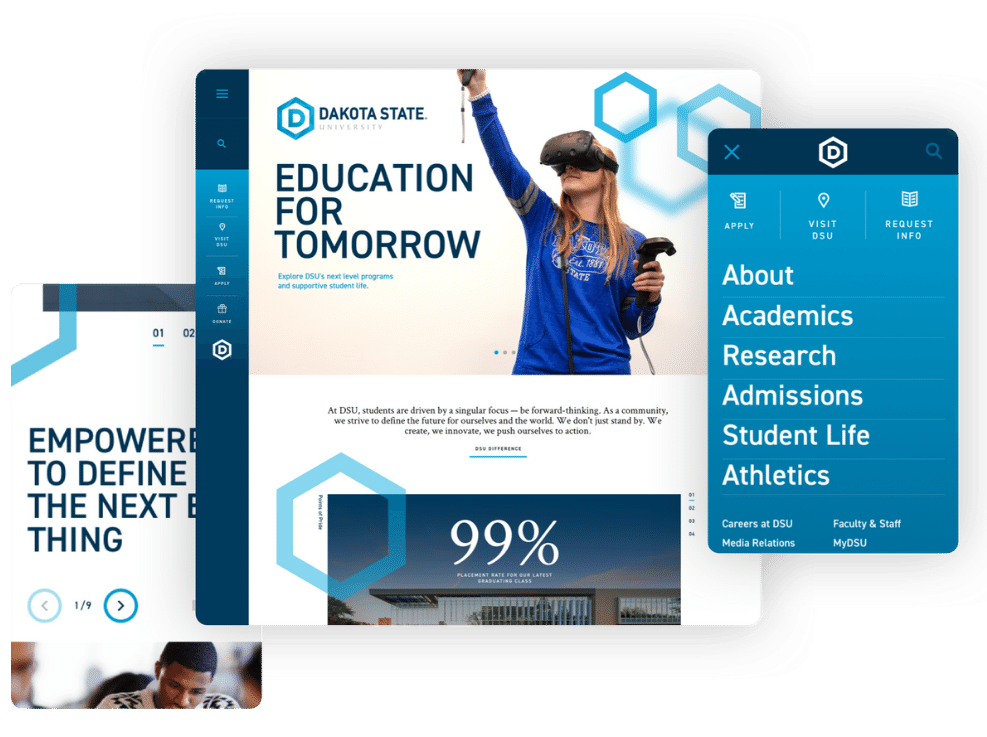Maximize Individual Experience With Cutting-edge Site Layout Solutions
In today's digital landscape, making the most of customer experience with ingenious site style options is important for services looking for to engage their target market successfully. By embracing user-centric design concepts, organizations can create interfaces that not only satisfy individual demands but additionally enhance total complete satisfaction. Key factors such as receptive layouts, intuitive navigation, and efficient aesthetic pecking order play an essential duty in this process. The assimilation of interactive elements can better boost the individual trip, motivating a reevaluation of traditional layout techniques. When we think about the developing expectations of users?, what techniques might arise.
Comprehending User-Centric Design

To execute user-centric style effectively, it is important to perform extensive research study, consisting of user interviews, studies, and functionality screening. These research study techniques supply beneficial data that notifies style decisions, making sure that the final product straightens with individual expectations. Additionally, creating individual identities can help designers understand and imagine with the end-users, leading the style procedure toward a lot more appropriate remedies.
Moreover, iterative design is a key component of user-centric techniques. By continually testing and refining designs based on user feedback, designers can identify pain factors and locations of enhancement, causing an extra refined end product. Inevitably, user-centric layout is not just a phase in the growth procedure but a continuous dedication to focusing on customer needs, resulting in more appealing and efficient electronic experiences.
Value of Responsive Layouts
As digital interactions significantly occur throughout a range of devices, the relevance of responsive formats can not be overstated. A responsive design makes certain that a web site adapts seamlessly to different screen dimensions, from desktop computer monitors to smart devices. This versatility is important in today's multi-device landscape, where customers expect a regular and appealing experience no matter just how they access content.
The primary benefit of receptive style is enhanced customer fulfillment. When a site is enhanced for all gadgets, it reduces the need for zooming, scrolling, or horizontal navigation, which can discourage users and lead to higher bounce prices. In addition, online search engine like Google prioritize mobile-friendly sites in their ranking algorithms, making receptive designs necessary for reliable SEO strategies.
Moreover, receptive formats assist in simpler maintenance and updates. Rather than taking care of different versions of an internet site for different tools, a single, fluid style can be modified, conserving time and sources. This all natural approach not only boosts effectiveness but additionally cultivates brand coherence throughout platforms. Eventually, buying receptive designs is not simply a trend; it is an essential principle of modern-day internet style that considerably boosts individual experience and engagement.
Enhancing Navigating and Availability
Reliable navigating and access are crucial elements of a properly designed site, considerably affecting individual engagement and complete satisfaction. An user-friendly navigation structure allows visitors to find information quickly and without effort, decreasing aggravation and raising the possibility of repeat check outs. Executing clear, descriptive tags for navigating links, together with a logical pecking order, can guide customers flawlessly via the internet site.
Ease of access is just as essential, guaranteeing that all users, no matter their disabilities or capabilities, can communicate with the site effectively. This can be achieved via the use of appropriate shade contrasts, message sizes, and alt message for pictures, which together enhance the experience for visually damaged individuals. Moreover, including key-board navigation and display reader compatibility broadens accessibility for individuals with diverse needs.
Routine functionality screening can give valuable understandings right into navigating effectiveness and accessibility concerns. By collecting feedback from genuine customers, designers can identify click for source discomfort factors and make enlightened changes. Ultimately, prioritizing navigation and access not just promotes inclusivity yet likewise cultivates a positive user experience, strengthening the brand name's dedication to quality and individual treatment in a significantly digital landscape.
Making Use Of Visual Pecking Order Properly
Aesthetic power structure functions as a leading structure in site design, directing individuals' interest to the most vital components on a page. By strategically organizing visual components such as color, typography, and spacing, designers can produce a clear pathway for individuals to comply with. This structure not only improves user experience but also improves material comprehension.
One efficient means to establish visual hierarchy is through making use of size and range. Larger elements naturally draw in even more attention, making headlines and key visuals prominent. Complementing this approach with contrasting shades can even more differentiate key material from secondary information, making certain that important information sticks out.
Moreover, the plan of aspects plays an important function in leading individual interaction. Employing a grid format can create a natural circulation, while whitespace assists to separate content and lower cognitive load - Website Design. This deliberate spacing permits individuals to process information more easily, leading to enhanced engagement
Finally, making use of consistent style patterns helps reinforce visual power structure, offering customers with familiar signs as they navigate the site. By focusing on these principles, developers can efficiently optimize customer experience, ensuring that visitors can effortlessly find the details they seek.
Integrating Interactive Aspects
The unification of interactive aspects right into site style can dramatically boost customer engagement and general experience. Interactive functions such as tests, sliders, and surveys not just astound customers however also promote active involvement, making the browsing experience much more remarkable. By encouraging customers to connect, internet sites can successfully preserve attention and decrease bounce rates.
Moreover, integrating dynamic material like animations and float impacts adds an enticing layer of interactivity. These aspects can guide users without effort via the website, highlighting essential info and contacts us to activity. Animated buttons can attract interest and enhance click-through rates.
Additionally, personalization with interactive devices review such as chatbots or suggestion engines permits web sites to satisfy private preferences, promoting a feeling of link. This tailored method not only boosts user contentment visit homepage yet additionally urges repeat gos to.
Including analytics tools to track interactions gives important understandings into user behavior, enabling continual enhancement of the interactive elements. Eventually, a properly designed interactive experience transforms a passive surfing session into an appealing journey, leading to boosted customer satisfaction and commitment. As a result, integrating interactive aspects is crucial for making best use of individual experience in modern internet site design.
Conclusion

In today's digital landscape, maximizing individual experience through innovative web site style options is vital for services seeking to engage their target market properly. Ultimately, prioritizing navigating and ease of access not only promotes inclusivity but additionally grows a positive customer experience, enhancing the brand name's commitment to top quality and individual treatment in a significantly electronic landscape.

In verdict, making best use of user experience with innovative website layout services demands a commitment to user-centric concepts. Website Design.